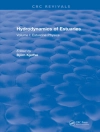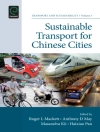To achieve goals for climate and economic growth, "negative emissions technologies" (NETs) that remove and sequester carbon dioxide from the air will need to play a significant role in mitigating climate change. Unlike carbon capture and storage technologies that remove carbon dioxide emissions directly from large point sources such as coal power plants, NETs remove carbon dioxide directly from the atmosphere or enhance natural carbon sinks. Storing the carbon dioxide from NETs has the same impact on the atmosphere and climate as simultaneously preventing an equal amount of carbon dioxide from being emitted. Recent analyses found that deploying NETs may be less expensive and less disruptive than reducing some emissions, such as a substantial portion of agricultural and land-use emissions and some transportation emissions. In 2015, the National Academies published Climate Intervention: Carbon Dioxide Removal and Reliable Sequestration, which described and initially assessed NETs and sequestration technologies. This report acknowledged the relative paucity of research on NETs and recommended development of a research agenda that covers all aspects of NETs from fundamental science to full-scale deployment. To address this need, Negative Emissions Technologies and Reliable Sequestration: A Research Agenda assesses the benefits, risks, and "sustainable scale potential" for NETs and sequestration. This report also defines the essential components of a research and development program, including its estimated costs and potential impact.
Board on Agriculture and Natural Resources & Board on Atmospheric Sciences and Climate
Negative Emissions Technologies and Reliable Sequestration [PDF ebook]
A Research Agenda
Negative Emissions Technologies and Reliable Sequestration [PDF ebook]
A Research Agenda
购买此电子书可免费获赠一本!
语言 英语 ● 格式 PDF ● 网页 510 ● ISBN 9780309484534 ● 出版者 National Academies Press ● 发布时间 2019 ● 下载 3 时 ● 货币 EUR ● ID 7145703 ● 复制保护 Adobe DRM
需要具备DRM功能的电子书阅读器












